 |
Bayonet 008
Pattern of 1907 bayonet; RSAF Enfield 09-1915. Marked SAAF over 604. SOUTH AFRICAN AIR FORCE. No clearing hole in pommel.
|
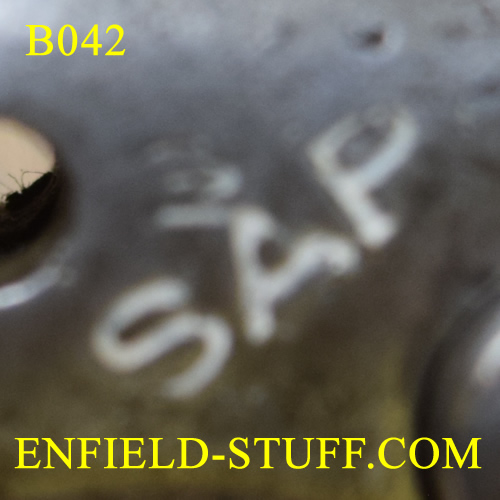 |
Bayonet 042
Pattern of 1907 bayonet; Wilkinson 07-1917. Marked SAP on reverse pommel SOUTH AFRICAN POLICE.
|
 |
Rifle 079
SMLE No. 1 Mk III* BSA Co.; No date; 1920's - 1930's production. Commercial BSA rifle with BSA 'teepee' logo on knox form and bolt handle. There is also a prominent Z beneath the BSA logo. Matched serial numbers on bolt, receiver, barrel, backsight, nosecap and forestock. Receiver a Mk III but the forestock wood covers the magazine cutoff slot, effectively making this a Mk III* rifle. Fingers around the backsight have been removed and the edges smoothed and finished. Windage-adjustable backsight. Knox form marked with the U-arrow of South Africa as well as the U-diamond mark, the latter attributed to the post-Commonwealth era, when South Africa withdrew from the Commonwealth due to protests of its apartheid policies. Overall 90%; Wood VG with typical small dings and dents. No import marks.
|
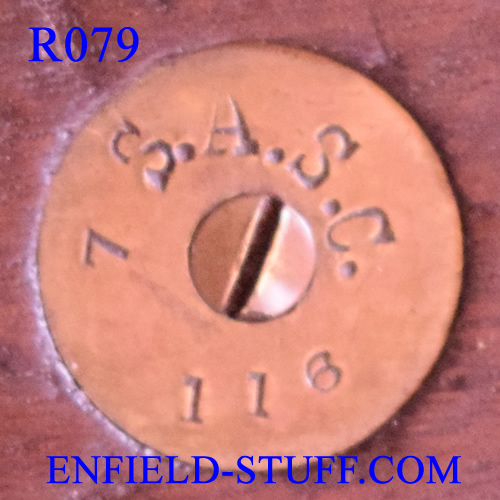 |
Rifle 103
SMLE No. 1 Mk III* BSA 1918. Marked "7 SASC". 7th Battalion, South African Army Service Corps. Battalions 1-12 of the SASC served with the South African 1st Division in Ethiopia and Abyssinia as well as with the Division when it became part of the 8th Army in the Western Desert. A number of these units were surrendered at the fall of Tobruk and were reconstituted for service in Tunisia and later with the 3rd Division in Italy. The piece still retains desert camo "sand" colored paint over about 30% of the metal parts. Overall 90%; w VG with typical small dings and dents. Matched (bolt, receiver, barrel, sight, nosecap, and forestock). No import marks.
|
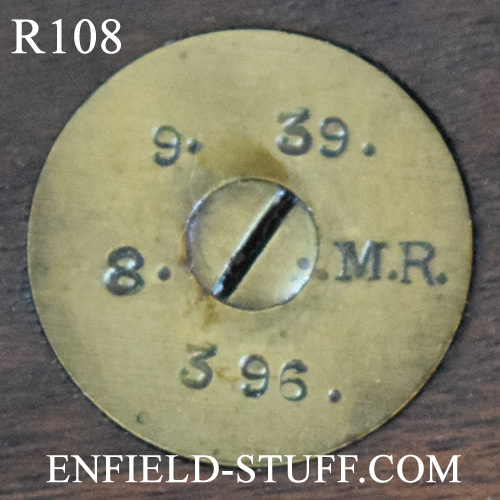 |
Rifle 108
SMLE No. 1 Mk III* . BSA 1916. Dated September 1939 and marked to the 8th Regiment of Mounted Rifles (Midlandse Ruitters - The Middleburg Rifles) headquartered in Middleburg, Cape of Good Hope. At the outbreak of WWII, the 8th M.R. became part of the newly formed 1st South African Division and saw extensive service in Abyssinia and Ethiopia against the Italians, in North Africa against Rommel, and in the Italian Campaign. Finish 90%; Wood VG. Matched (bolt, receiver, barrel, sight, nosecap, and forestock). No import marks. South African Regimentally marked weapons are very hard to find.
|
 |
Revolver 151
Pistol No. 2 Mk I*. Enfield 1941. Marked on backstrap to No. 2 SQD SAAF (2ND Squadron South African Air Force). No. 2 Squadron is currently the only fighter squadron in the SAAF. They are the lineal descendants of the South African squadrons that served with the RFC and the squadron itself was formed in 1922. During WWII they flew Gladiators, Hurricanes, and Spitfires in East Africa, North Africa, and Italy. After the war they reequipped with P-51 Mustangs which they took to Korea in 1951. In 1952, they were equipped with F-86F Sabres and worked "MIG Alley" as part of the 52nd Fighter Group, USAF. Really a hard-core bunch of fighter jocks. Overall 95%. Bore sharp and bright. Grips - Bakelite - are VG. Matched serial numbers (frame, barrel, and cylinder). No import marks.
Lorem ipsum dolor sit amet, consectetur adipiscing elit, sed do eiusmod tempor incididunt ut labore et dolore magna aliqua.
|
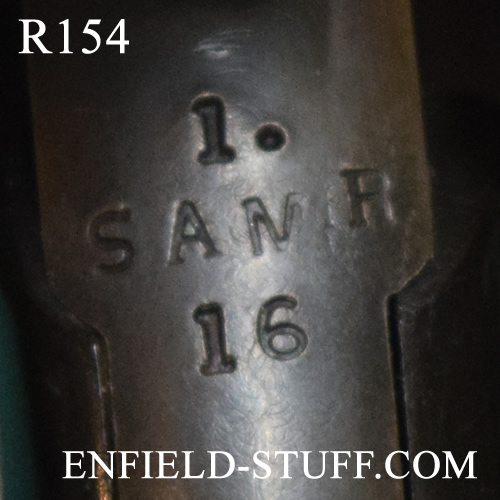 |
Revolver 154
Webley Mk II. Cal .455. Marked on backstrap behind hammer "1 SAMR", and rack number 16. Indicating 1st South African Mounted Rifles. The 1st SAMR was formed in 1913 from the Cape Mounted Rifles (1878) into a new regiment and made part of the permanent forces of the Union of South Africa. It was headquartered at King William's Town, Cape of Good Hope. The piece is also marked with a "C broad arrow G" (Cape Government) on the bottom of the strap behind the trigger guard. Overall 90%+ finish. Bore is very clean and bright. VG+ hard rubber grips. Matched serial numbers (frame, barrel, and cylinder). No import marks.
Lorem ipsum dolor sit amet, consectetur adipiscing elit, sed do eiusmod tempor incididunt ut labore et dolore magna aliqua.
|
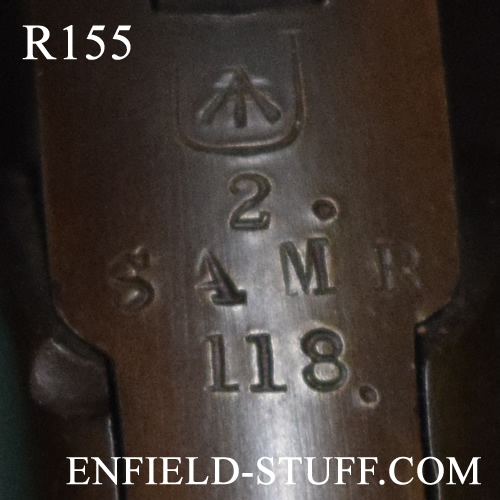 |
Revolver 155
Webley Mk III. Cal .455. Marked on backstrap behind hammer "U and broad arrow", "2 SAMR", and rack number 118. Indicating 2nd South African Mounted Rifles. The 2nd SAMR was formed in 1913 by combining the Natal Police (1874) and the Orange Free State Police (1908) into a single regiment and making it part of the permanent forces of the Union of South Africa. It was headquartered in Pietermaritzburg, Natal. The piece is also marked with a "V" on the right side of the frame indicating volunteer. A stores date of "9 . 18" is marked on the top strap. Overall 90%+finish. Bore is very clean and bright. VG+ hard rubber grips. Matched serial numbers (frame, barrel, and cylinder). No import marks.
Lorem ipsum dolor sit amet, consectetur adipiscing elit, sed do eiusmod tempor incididunt ut labore et dolore magna aliqua.
|
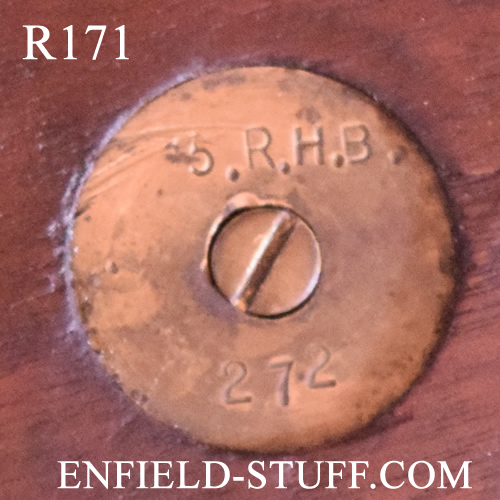 |
Rifle 171
SMLE No. 1 Mk III* . Enfield 1918. Marked to the 3rd Battalion, Railroads and Harbors Brigade (3 RHB). Formed in 1939 from personnel of the South African Railways (ZARR), the RHB handled railways and ports for the army. In addition, they had an extensive intelligence function with respect the African National Congress (Nelson Mandela not only helped found the ANC but was also a founder of the Communist Party of South Africa in 1933) as well as numerous German agents amongst the Boers. Many very interesting folks in this crowd. Two battalions (1st and 2nd) were in North Africa and Italy. The 3rd was on domestic assignment.
|
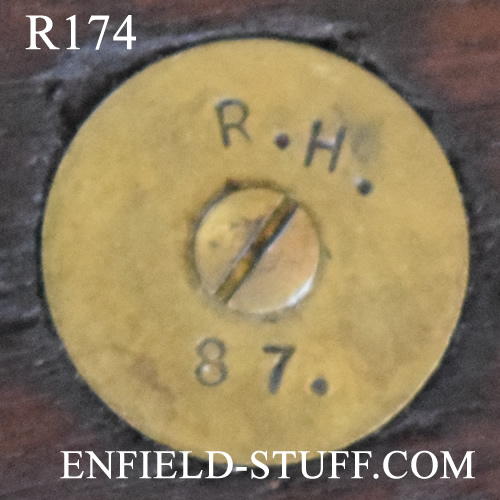 |
Rifle 174
SMLE No. 1 Mk III* . BSA 1918. Marked to the Regiment Hougveld (RH). Formed in 1922 from the old 9th Mounted Rifles (Hougveld Ruiters).
|
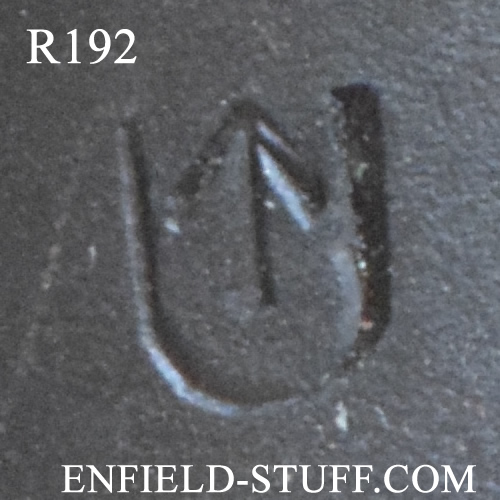 |
Rifle 192
British Rifle No. 4 Mk I made 1942 by Savage and U.S. Property Marked. Caliber British 303. The British Army lost most of its small arms in the evacuation from Dunkirk in May 1940. The U.S. responded with the Lend-Lease bill that permitted us to send the Brits military equipment on a loan or lease basis. Savage Arms received a contract to manufacture No.4 Mark I rifles during this time. The rifles were marked U.S. Property on the top of the left receiver rail. The letter S in a box also appeared on the receiver. This rifle is one of those made by Savage. It has the broad arrow inside the letter U stamped on top of the receiver indicating service with South African forces during World War II. There is a tiny import mark on the left side of the butt socket. The metal finish is about 95% with dark black parkerizing. The wood is correct for a Savage with grooves cut into the top handguard. The overall condition is excellent. Savages are one of the most desirable of the No.4 Mark I rifles, and this one was used by the South African forces.
|
 |
Rifle 207
SMLE No. 1 Mk III* . BSA 1918. South African "U" and "broad arrow" on receiver. Disk is marked "RPS" – Regiment President Steyn. One of the line infantry regiments of the South African Army named to commemorate Boer leaders. The regiment is still in the line of the South African Army. Overall 90% finish. Wood VG. Matched (bolt, receiver, barrel, sight, nosecap, and forestock). No import marks.
|
 |
Revolver 224
I can never decide whether this one belongs with the South Africans or the Canadians. Or maybe with the Boy Scouts. Webley Mk IV 1905 cal. .450/.455 Marked SAC - South African Constabulary.
British planning for the postwar period of the South (Boer) African War (1899-1901) included a para-military force to police the conquered Boer republics. In August 1900, two months after the fall of Pretoria, Major-General Robert Baden-Powell, famous as the leader of the besieged garrison of Mafeking, was appointed to raise and command the new South African Constabulary. In retrospect, British hopes that the 8500-strong constabulary could assume responsibility for pacifying the countryside were hopelessly optimistic. The Boers continued to fight on following the capture of their capitals, contrary to the expectations of the British high command. Baden-Powell had been impressed with the Canadians, especially "C" Battery, with which he had served at Mafeking, and he expressed a desire to 'get as many of the Canadians in his force as possible'. While some members of the first and second Canadian contingents did transfer to the SAC, the bulk of the Canadians that served in the force - 30 officers and 1208 other ranks - were enlisted in Canada in early 1901. Nearly three-quarters of the Canadian officers, and 100 of the men, had previous service in South Africa. Some members of later Canadian contingents also joined the force rather than return to Canada at the war's end. Among the Canadian members of the SAC was the legendary Colonel Sam Steele, who had already commanded Strathcona's Horse. He would spend five years in South Africa, returning to Canada in 1906. Many of the Canadians assumed they would serve together under Canadian officers. This was not the case, however, and the British broke up the Canadian contingent, an act which led to some disciplinary problems. The SAC was a military organization disguised as a police force. Nevertheless, the British Army did not recognize it as a full partner in the war, despite the fact the SAC took part in many campaigns and experienced some hard fighting, as attested to by its casualty records and the list of honours and awards won by its members. At least 57 Canadians died and six won decorations while serving in its ranks
|
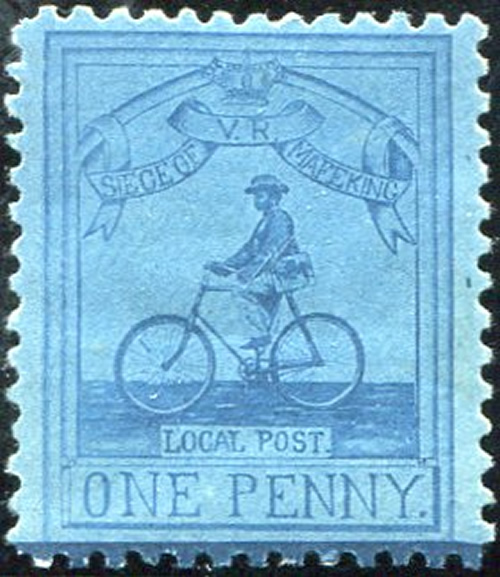 |
Siege of Mafeking
During the siege of Mafeking Baden-Powel put boys to work as runners and as messengers, often using the newly invented "safety bicycles". A unique postage stamp was created in their honor during the siege. Not long after the war was over, that basic idea of training "Boy Scouts" in fieldcraft and instilling the idea of duty to God and Country evolved into a Boy Scout field manual (printed as a very popular serial in several magazines) and an international organization.
I have the feeling that this South African Constabulary Webley is going to end up with two or three interesting stories that need to be told.
|
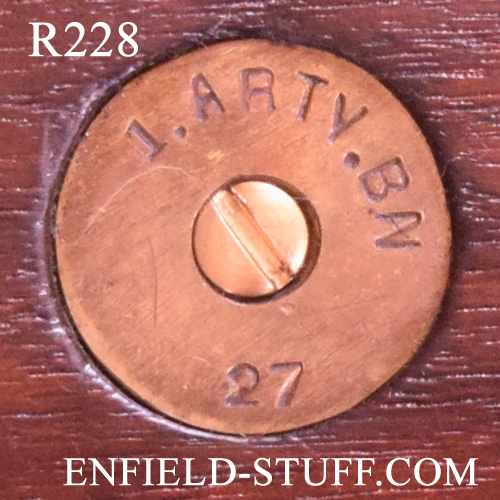 |
Rifle 228
SMLE, No. 1 Mk III*. Enfield 1918. Marked to the 1st Artillery Battalion of the South African 1st Division. The 1st South African Division served throughout the Eritrean and Ethiopian Campaigns against the Italians and then served as a part of the British 8th Army in the campaigns in Egypt and Libya against the Afrika Korps. The piece is marked on the receiver with the "U" and "broad arrow" South African property mark and on the stock marking disk "1 Arty Bn". Overall 90% finish. Wood is VG with the usual dings and scuffs from service. All matching: bolt, receiver, barrel, rear sight, nosecap, and forestock. No import marks. Stamped 28622 on the buttstock. Barrel dated 1918.
|